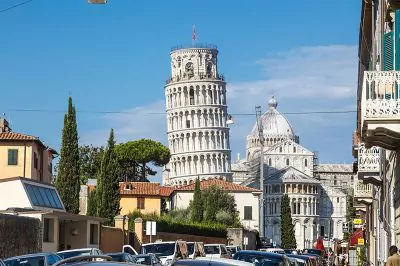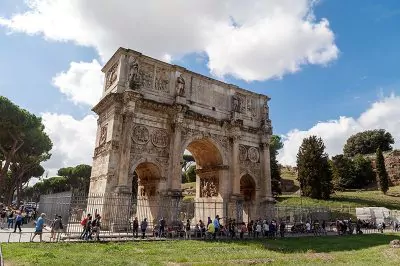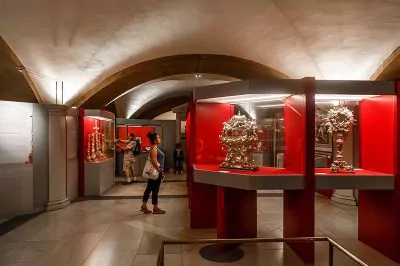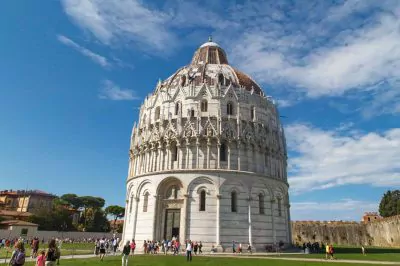
Leaning Tower of Pisa: What You Need To Know About Symbol of Pisa
The city of Pisa is a UNESCO-protected area like Siena, Florence and Pienza, especially for its historic buildings, including the Leaning Tower of Pisa.
Named after the city of Pisa in Italy, Pisa is the famous Piazza del Duomo (Cathedral Square), also known as Piazza del Miracolide (Piazza of Miracles), with its historic area. Within this walled square is the leaning Leaning Tower of Pisa, the Baptistery of Pisa and the Cathedral of Pisa.
Piazza del Duomo is a protected area, so there is no public transportation near it. After getting off the train or bus, you have to walk for a while. Follow the crowds to reach the area where the Leaning Tower of Pisa is located. Because the square is very crowded and people from all over flock to the historical places to visit.
Why is the Leaning Tower of Pisa crooked? The Leaning Tower of Pisa is so famous for being leaning to this day. Its construction began in 1173 as a bell tower for the cathedral it stands next to. This large marble structure is 56 meters high. As it is both marble and so tall, the moist soil beneath it cannot support its weight, and every year it slopes at a rate of seven tenths of 1 mm.

The location of the tower, built in a city where the soil is composed of alluvium, was wrong from the beginning. It is only natural that the tower, built on the land left behind by the river waters, could not stand in its place, like okey stones planted on a soft carpet, and that such a high structure could not lift 830 tons of marble.
It is also interesting that the architects of the Middle Ages could not foresee this. So much so that the tower started to lean after the 3rd floor. And not on the south side like today, but on the north side. As the storeys increased, the columns on the south side were made taller, resulting in a structure where the southern length of the tower was 86 cm longer than the length of the north side.

The Leaning Tower of Pisa, which was in danger of collapse for a while, was closed for the first time in its history between 1990 and 2001 and was prevented from collapsing by a £20 million project. Dozens of ways were tried for the correction, but the balance of the Leaning Tower of Pisa was preserved by reducing the soil under the ground on the north side. Authorized people claim that the Leaning Tower of Pisa can remain intact for at least 300 years.
It is possible to climb the Leaning Tower of Pisa. The tower consists of 6 superimposed columns and you have to climb 294 steps to get to the top. The entrance fee is not too unreasonable for budget travelers. If you think that the view you will see around you when you climb the Leaning Tower of Pisa is just a standard city, you can easily disqualify the idea of climbing the Leaning Tower of Pisa.
Let us remind you that there may be long queues if you want to climb the tower. A maximum of 40 people are allowed on the tower and you may have to wait in line. If you don’t want to wait in line, it is recommended to buy your ticket online from the official website.
Lupa’s Story
There is a statue of a wolf in the green area next to the Leaning Tower of Pisa. According to legend, this wolf named Lupa nursed the brothers Romus and Romulus, the founders of Rome, who were left in a cave by their mother.
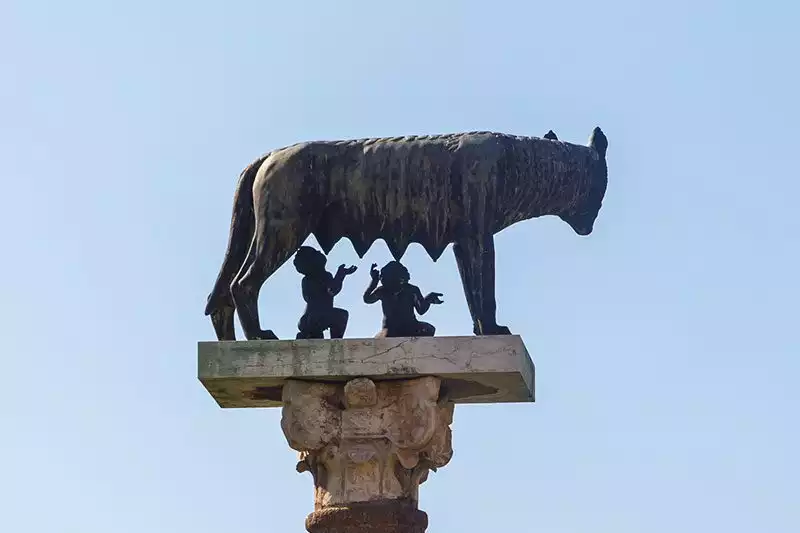

Saved from death by the wolf, the brothers are adopted and raised by a family. While they are in the process of establishing the Roman state, Romulus kills his brother Romus and becomes the sole ruler of the state. The direction Lupa is facing points to Rome.
For more information about the Leaning Tower of Pisa and transportation suggestions to Pisa, visit our Pisa Travel Guide page. In the area where the Leaning Tower of Pisa is located, the main structure of Pisa, Pisa Cathedral, Camposanto Mausoleum and Pisa Baptistery are among the places to visit in Pisa.

